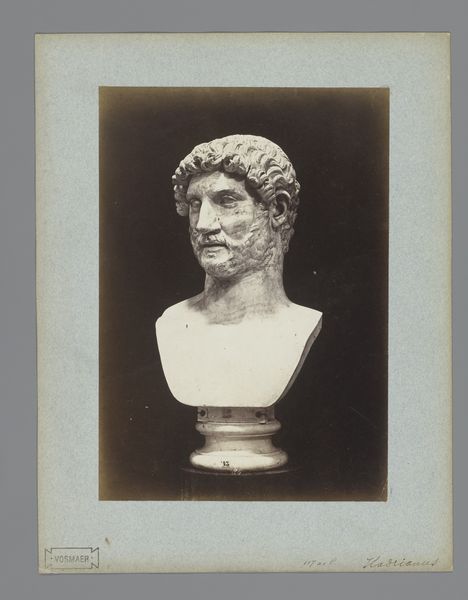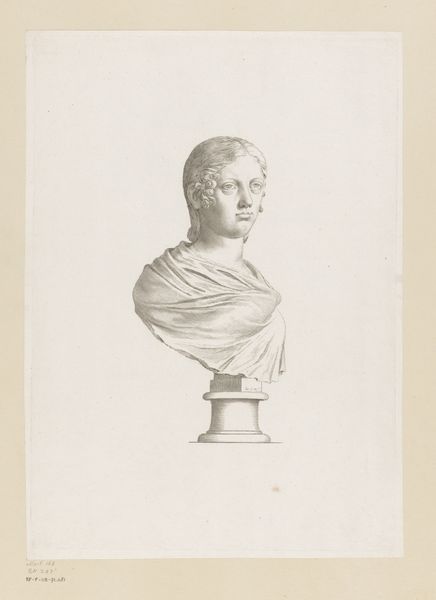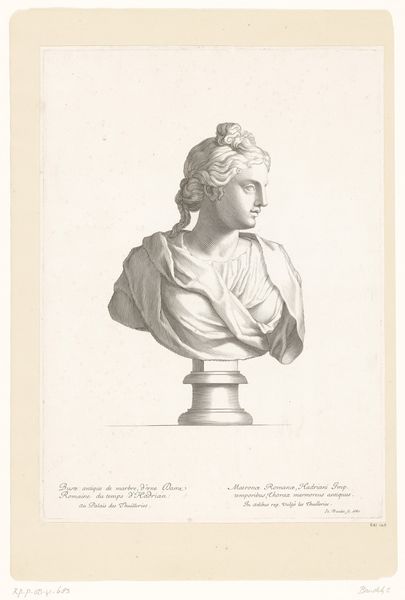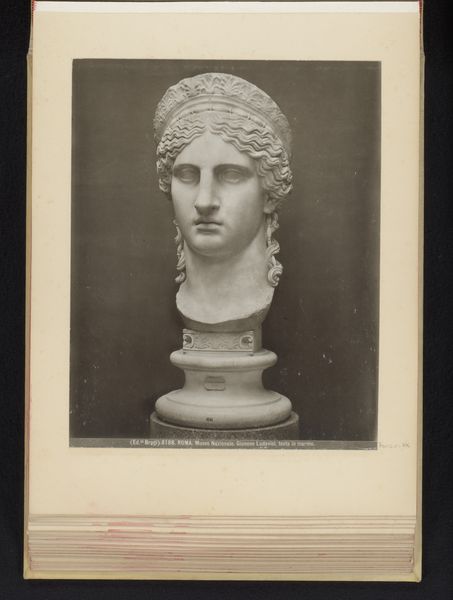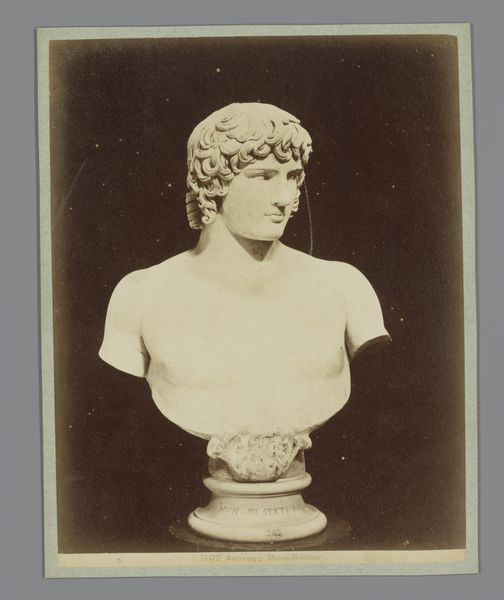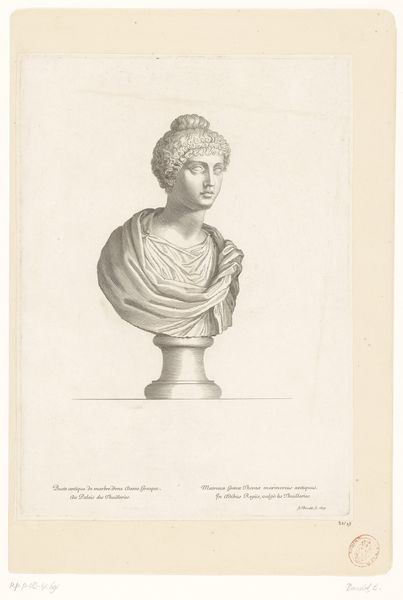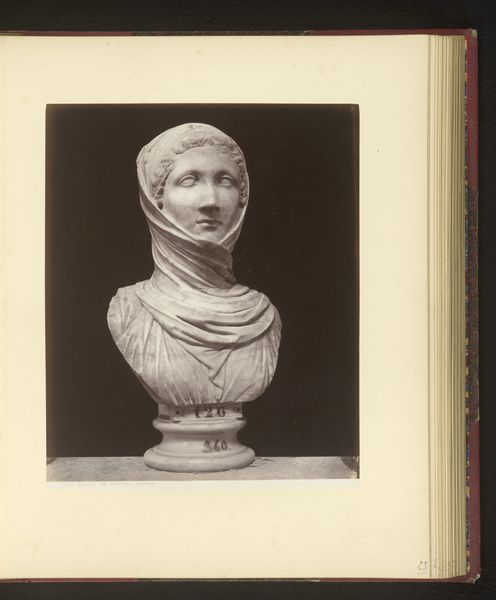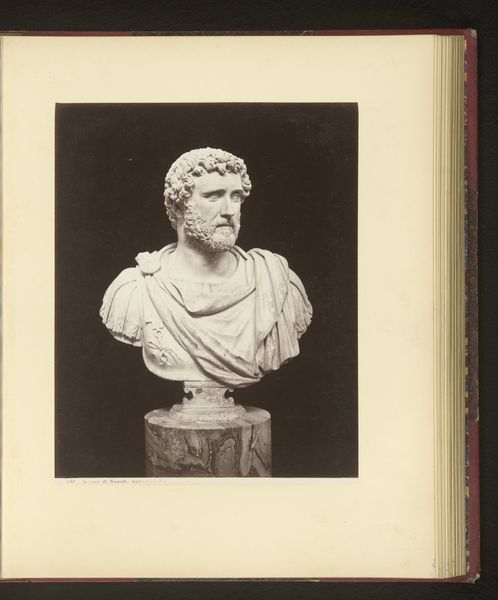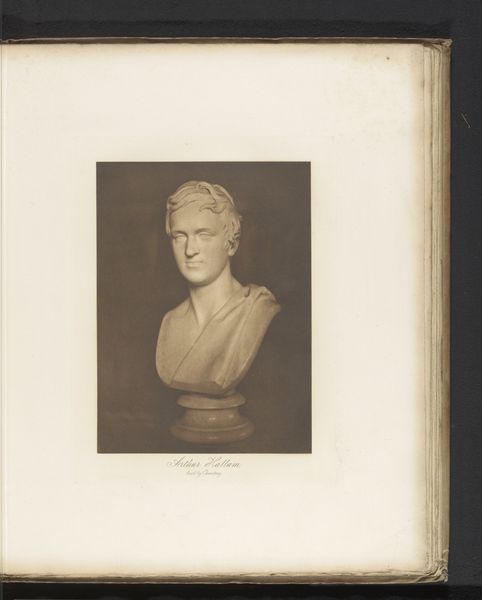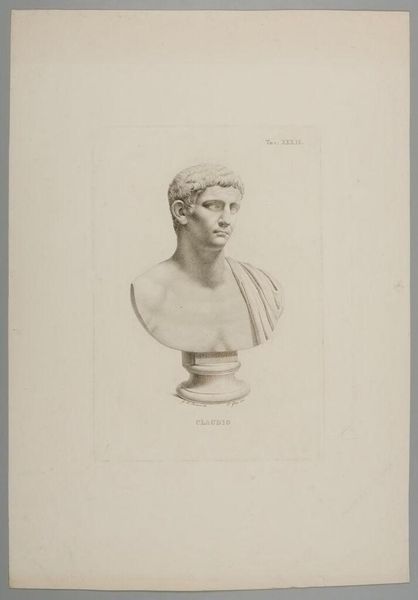
photography, sculpture
#
portrait
#
classical-realism
#
photography
#
romanesque
#
ancient-mediterranean
#
sculpture
Dimensions: height 324 mm, width 250 mm
Copyright: Rijks Museum: Open Domain
Curator: So here we have a photographic portrait of a sculpted bust: Julia Domna, created sometime between 1851 and 1890. Editor: It’s interesting. There's a severity to her gaze, a real directness. She appears very confident in sepia tones. Curator: Exactly. Julia Domna was a powerful Roman empress, wife of Septimius Severus. She was known for her intelligence and influence, which this bust, rendered and then captured through photography, clearly suggests. Note how the sharp focus creates depth, and the angle accentuates her jawline and powerful neck. Editor: I like how the curls soften the impression slightly though; the complex, almost rope-like coiffure feels really intricate even in a photograph. Do you get the sense that this photograph seeks to freeze classical beauty in time? Curator: Certainly! By the later half of the nineteenth century, there was intense fascination with ancient civilizations. Photography afforded an unparalleled way to document artifacts such as these, as it simultaneously captures its real, concrete form, but also makes it more widely accessible and mutable. The choice to render stone and sculptural qualities through the lens only heightens the feeling that this empress, who was incredibly significant in antiquity, now almost breathes, through circulation in this printed image. Editor: This photograph provides the sculpture with this new layer of historical resonance then. It's like one era contemplating another. Do you know what stone was actually used? Curator: I’m unsure. Regardless of its exact material, photography reframes a fixed artwork in this compelling way. It becomes part of a wider story not only about her, but also how people after her would come to know her. It is something like myth-making in and of itself. Editor: So beautifully captured: a kind of portrait of a portrait. This invites me to consider my relationship to a really distant figure. Curator: Absolutely, it is a kind of triangulation that compresses art historical creation into an accessible and compelling composition.
Comments
No comments
Be the first to comment and join the conversation on the ultimate creative platform.
